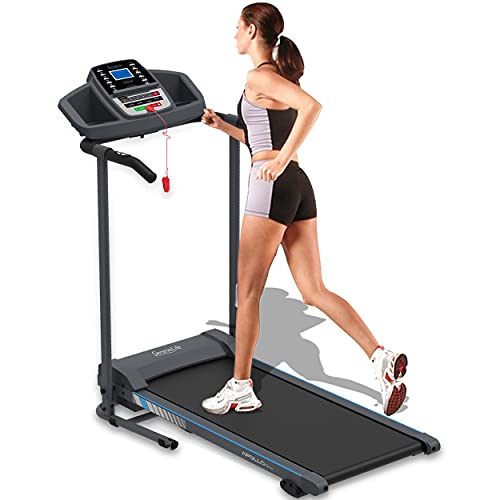Exploring Non-Motorized Treadmills: Benefits, Features, and Usage
In an age where physical fitness enthusiasts are progressively choosing environmentally friendly and sustainable workout devices, non-motorized treadmills are getting acknowledgment. These treadmills supply a simple yet reliable way for users to take part in cardiovascular workout without counting on electric power. This post looks into the advantages, functions, and factors to think about when obtaining a non-motorized treadmill, along with responses to regularly asked questions.
Understanding Non-Motorized Treadmills
Unlike their motorized equivalents, non-motorized treadmills depend solely on the user's physical effort to initiate movement. When a user strolls or works on the belt, the movement moves it forward. They are frequently referred to as 'manual treadmills' and are renowned for their density, minimalistic styles, and occupant-directed speed control.
Key Features of Non-Motorized Treadmills
| Function | Description |
|---|---|
| Design | Sleek, compact, and often foldable, non-motorized treadmills are developed for home usage without requiring a considerable footprint. |
| User-Controlled Speed | The user controls the speed by adjusting their rate, which permits a more tailored exercise experience. |
| Resistance Levels | Numerous non-motorized treadmills come with adjustable resistance settings, permitting users to increase the strength of their exercises. |
| Toughness | Constructed with robust products, the majority of designs assure longevity and hold up against intense workouts. |
| Minimal Maintenance | Without a motor, these treadmills require less upkeep and are less susceptible to technical issues. |
Advantages of Non-Motorized Treadmills
- Environmental Sustainability: As they run without electricity, non-motorized treadmills have actually a decreased eco-friendly footprint.
- Cost-Effectiveness: Typically, these treadmills are more budget-friendly than motorized alternatives, making them a budget-friendly choice for numerous.
- Higher Caloric Burn: Studies suggest users may burn more calories on non-motorized treadmills due to the additional effort needed to maintain motion.
- Greater Safety: Non-motorized treadmills typically have a lower risk of falling due to their slower speed capabilities. Users can likewise pertain to a fast drop in reducing their speed.
- Better Core Engagement: Many users report better muscle engagement, especially in the core, as preserving balance and speed relies more greatly on the body's stabilizing musculature.
- Modification of Workouts: The lack of a predetermined pace allows users to fine-tune their exercises, integrating walking, running, and running modes depending upon their fitness levels.
Comparison of Non-Motorized vs. Motorized Treadmills
| Feature | Non-Motorized Treadmills | Motorized Treadmills |
|---|---|---|
| Power Source | Manual | Electric |
| Cost | Generally lower | Normally higher |
| Maintenance | Low | Moderate to high |
| Running Experience | Controlled by user effort | Pre-set speeds offered |
| Mobility | Frequently more portable | Generally bulkier |
Picking the Right Non-Motorized Treadmill
When picking a non-motorized treadmill, there are numerous elements to think about:
- Space Availability: Ensure that you have appropriate space for the treadmill, thinking about both use and storage area.
- Weight Capacity: Check the maximum weight limitation, particularly if several users will be utilizing the machine.
- Building Quality: Look for designs made from long lasting materials to guarantee longevity.
- Budget plan: Assess your spending plan while remembering that purchasing a higher quality machine can result in greater fulfillment and longevity.
- Additional Features: Some treadmills come geared up with additional functions such as heart rate displays, incline settings, and even Bluetooth connectivity.
Regularly Asked Questions (FAQ)
1. Can non-motorized treadmills actually supply a good exercise?
Yes, non-motorized treadmills can offer an excellent cardiovascular workout. Users can achieve their desired strength levels by adjusting their speed, which can result in more calories burned compared to utilizing a motorized treadmill at a stable speed.
2. Are non-motorized treadmills ideal for newbies?
Definitely! They are suitable for all fitness levels. Novices may discover the manual speed control allows them to change their workouts slowly, constructing self-confidence and physical fitness in time.
3. Do non-motorized treadmills have weight limits?
Yes, the majority of non-motorized treadmills have a defined weight capacity. It's crucial to check these limits before purchasing to guarantee the machine is appropriate for the users.
4. Is it easier to operate on a non-motorized treadmill compared to a motorized one?
Running on a non-motorized treadmill can feel more tough because you are solely accountable for preserving speed and momentum. This allows for improved engagement of leg muscles and burns more calories.
5. Just how much maintenance do non-motorized treadmills require?
Non-motorized treadmills need less maintenance than motorized models, though users must frequently inspect the machine for wear and tear and keep the running surface clean.
Non-motorized treadmills represent an excellent financial investment for individuals seeking sustainable, reliable, and flexible physical fitness alternatives. helpful resources and functions they use, along with their cost and ease of use, make them appropriate for a wide variety of fitness enthusiasts. By understanding their significance and functionality, individuals can make informed decisions about incorporating non-motorized treadmills into their fitness routines, enhancing their general health and well-being. Whether in your home or in the fitness center, non-motorized treadmills can invigorate a person's approach to cardiovascular exercise and add to a healthier lifestyle.

